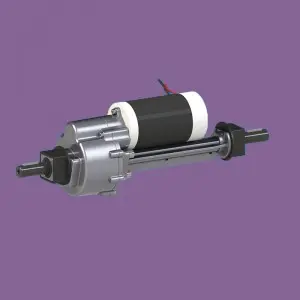Are you wondering where your vehicle’s transaxle is located? Knowing how your vehicle is constructed is critical to maintaining and repairing your vehicle. In this blog, we’ll explore the transaxle, its purpose, and where it’s typically located in a vehicle.
Body:
Transaxle – Important Components:
Before we dive into where the transaxle is located, let’s first understand what it means. The transaxle is a key component in cars with front-wheel drive or all-wheel drive. It combines the functions of the transmission, differential and axle into a single unit, delivering power to the driven wheels.
Transaxle location:
In most front-wheel drive vehicles, the transaxle is located near the front of the engine. It is usually mounted on the side of the engine block and is directly connected to the engine through a clutch assembly or a torque converter. This position ensures efficient power transfer from the engine to the wheels.
Components of the transaxle:
A transaxle is made up of several components, each of which is responsible for transmitting power to the wheels. The following are the key elements in a transaxle:
1. Transmission: The transmission within the transaxle is responsible for shifting gears to keep the engine running within its optimum performance range. It consists of a set of gears, synchronizers and variators that provide different gear ratios for various driving conditions.
2. Differential: The differential is an important part of the drive axle, allowing the wheels to rotate at different speeds when turning. It distributes the engine’s torque evenly between the two front wheels, ensuring proper handling and traction.
3. Axle: The transaxle is attached to the axle, which transmits power from the transaxle to the wheels. These axles are responsible for transmitting rotational force to each wheel so that the vehicle can move forward.
Maintenance of the transaxle:
Keeping your transaxle in good working order is critical to optimal vehicle operation. In the long run, regular maintenance and upkeep can prolong its life and avoid costly repairs. Here are some maintenance tips:
1. Fluid Check: Transaxle fluid should be checked periodically and replaced as recommended by the manufacturer. Fresh fluid ensures lubrication and prevents overheating or excessive wear.
2. Replace the filter: Many transaxles have filters that should be replaced according to the manufacturer’s guidelines. The filter keeps debris and contaminants from entering the transaxle and causing damage.
3. Professional Inspections: Regular inspections by a qualified mechanic can help spot potential problems before they become major problems. They can check for leaks, worn parts, and unusual noises from the transaxle.
Understanding the location and function of the transaxle in the vehicle is critical to proper maintenance and troubleshooting. Remember, the transaxle is a vital component that combines the transmission, differential, and axles into a single unit that transfers power from the engine to the wheels. By maintaining your transaxle on a regular basis, you can ensure a smooth and efficient drive while avoiding costly repairs.
Post time: Aug-18-2023


